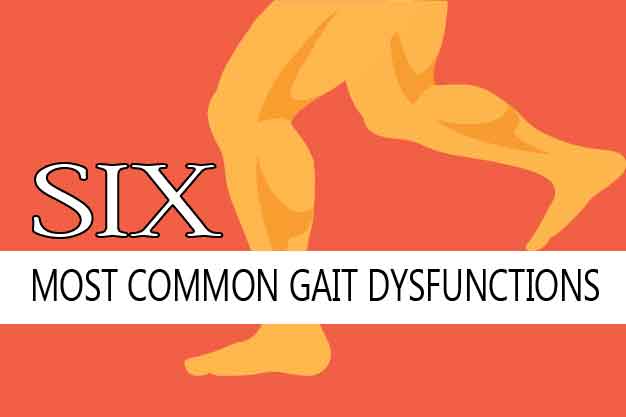The SIX Most Common Gait Dysfunctions
There are six common classifications of gait dysfunctions. They include Antalgic Gait, Cerebellar Ataxia, Parkinsonian, Steppage, Vestibular Ataxia, and Waddling. Diagnosing a patient with the correct gait dysfunction is imperative to providing the most appropriate treatment.
Antaglic Gait:
An individual with an antalgic gait dysfunction has a painful or disturbed leg in which they are bearing weight, and the patient usually appears to be walking with a limp. It is most likely displayed with slow, short steps, with a shift in weight occurring from the leg that has pain. Possible causes include arthritis or even traumatic injury.
Ataxia (Cerebellar):
This gait dysfunction can be caused by a condition of the region in the brain known as the cerebellum. It is also seen in people with multiple sclerosis or as the result of a stroke. Have you ever wondered why a person suspected of being intoxicated is asked to walk in a straight line? Because the cerebellum acts as a sponge when intoxicated, cerebellar ataxia can also be caused by drug and alcohol intoxication. If affected, one walks with a wide base with erratic and unpredictable foot placement.
Parkinsonian:
This type of gait dysfunction is related to Parkinson’s Disease, where individuals make very small movements due to a defect in their nervous system. While walking, Individuals will take small, short steps, and may even shuffle.
Steppage (Neuropathic):
One experiencing steppage has an inability to lift the ankle, which is known as ‘foot drop’. The condition results in a high step, with individuals raising the thigh up to exaggerate their step in order to clear the ankle. When someone is dragging their foot or toes or uncontrollably slapping the toes on the ground while walking, they are most likely experiencing steppage.
Ataxia (Vestibular):
Vestibular Ataxia is often related to vertigo (sensation of loss of balance), Meniere’s disease (inner ear condition), and labryrinthitis (a type of inner-ear disorder in one ear). Individuals walk unsteady, usually falling toward one side. The individual may stagger, walk with a broad base, and lean back or to one side. Balance is one of the greatest disturbances with vestibular ataxia.
Waddling:
muscular dystrophy and myopathy are the main causes to this pattern. Individuals tend to walk on their toes and sway side to side while in motion. Waddling is also seen in pregnant individuals.
The Solo-Step overhead track and harness system is uniquely designed to help therapists and with common gait dysfunction like those listed above. To see the Solo-Step system in use and how it can help your PT practice, checkout our Solo-Step videos.
